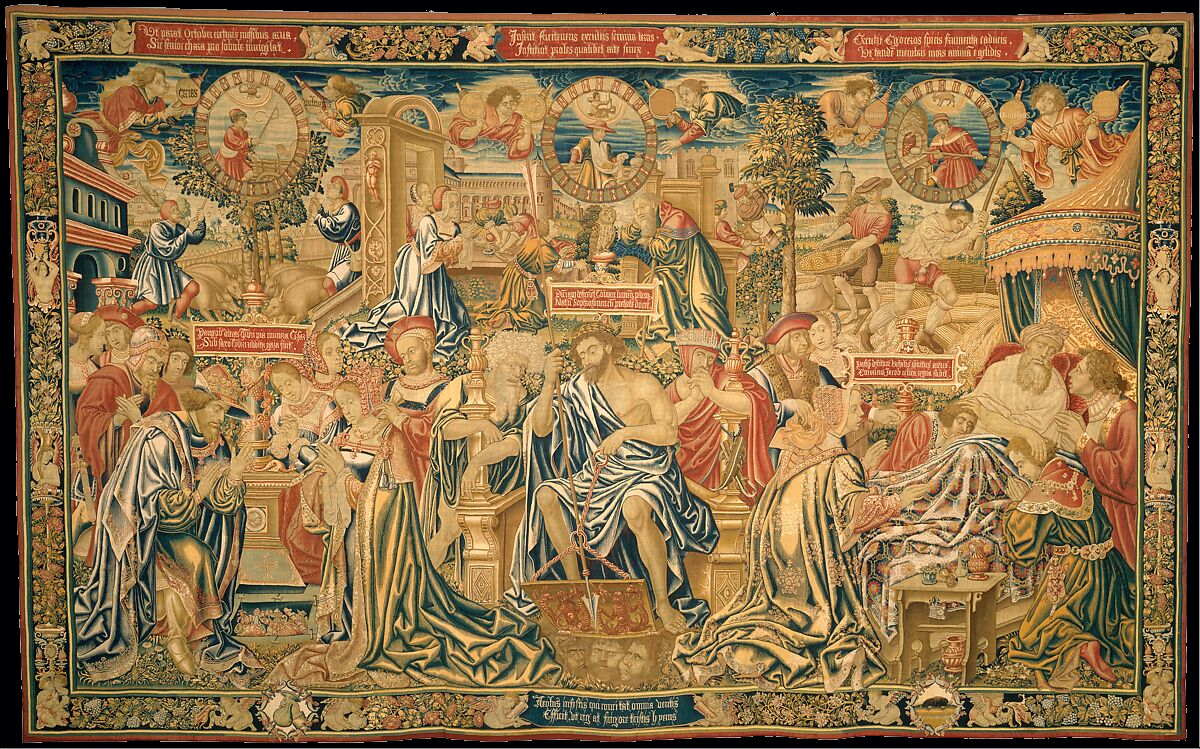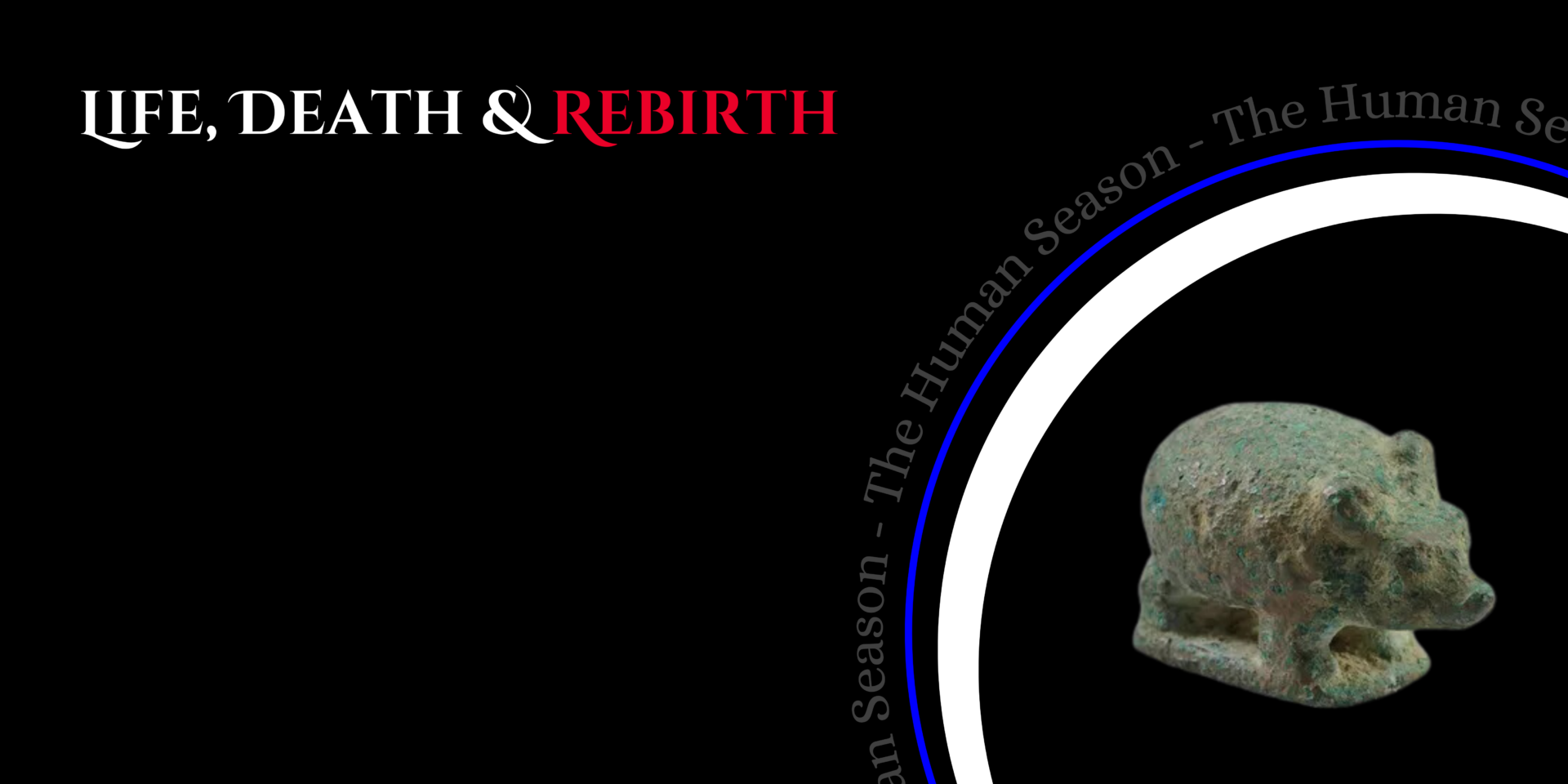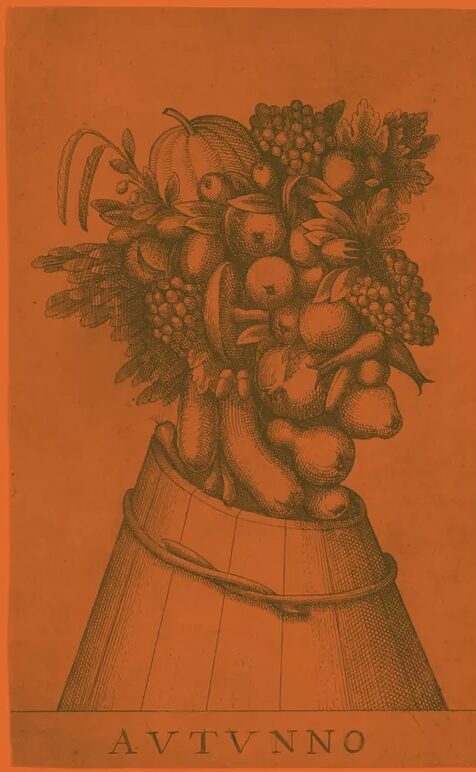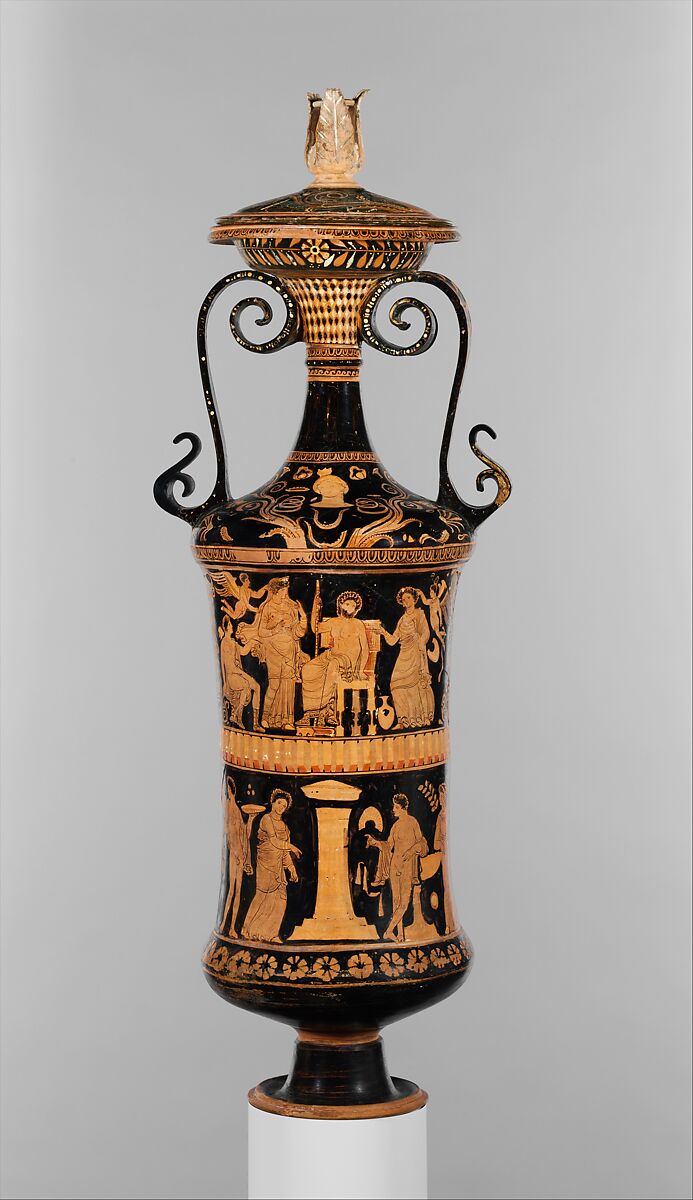
I smeared black lines on my face,
drew crosses on my chest with the nails,
raised my arms and stomped my feet,
dancing in honor of spring and rebirth,
dancing in honor of winter and death.
An extract from Sacrifices, Richard Jones, 2000
The human life cycle has been a recurring source of inspiration for artists for as long as art has been produced. Death in particular, a phenomenon so mysterious and yet so present in life, has inspired creativity designed both to shock and to comfort.
Drawing on the cycle of the seasons, artists have found a particular source of inspiration in depicting the so-called ‘ages of man’ – the human experience roughly divided into birth, youth, maturity, and death. Particularly popular in Medieval Europe, by using the seasons as a framing device for visualising the progression of our lives artists have not only sought to understand, but also to reassure – after death, life will come again.

The Twelve Ages of a Man
Probably after a design by the Workshop of Bernard van Orley (1487-1541)
Netherlandish, ca. 1515.
The Metropolitan Museum of Art. Gift of The Hearst Foundation, in memory of William Randolph Hearst, 1953. Learn More.
This tapestry is one of a series of twelve, each separated into periods of six years. The activities commonly associated with October, November, and December are depicted alongside a man experiencing the final stages of his life, through old age, infirmity, and death.
But there remains a sense of hope in this image. Just as spring will come again, the presence of angelic figures in the skies reassures the viewer that, according to the beliefs of Christian artists like van Orley, there is a life after death for humans too.

Death is coming to me,
New Valleys,
New great moons to haunt my tired lips.
An extract from Death, Louriene Aber, 1924
A system of belief that exists in most world religions is that of rebirth, or life after death. Seeking confirmation of this belief, humans have looked to the natural, and more specifically to the cycle of the seasons. With summer comes the blossoming of life, autumn is a time of abundance, winter of preservation, and spring is the bringer of sunlight and revival. Through the seasons, all life experiences a cycle of life, death, and rebirth.
The following artworks, sourced from communities around the world, have been inspired by the connections the artists have observed between the human life cycle and the changing of the seasons.

∞
Introduction

II
Surviving and Thriving

III
Today & Tomorrow




